How to Master the Blues Scale on Guitar
Have you ever heard an amazing blues guitar solo and thought to yourself – how did they come up with that?
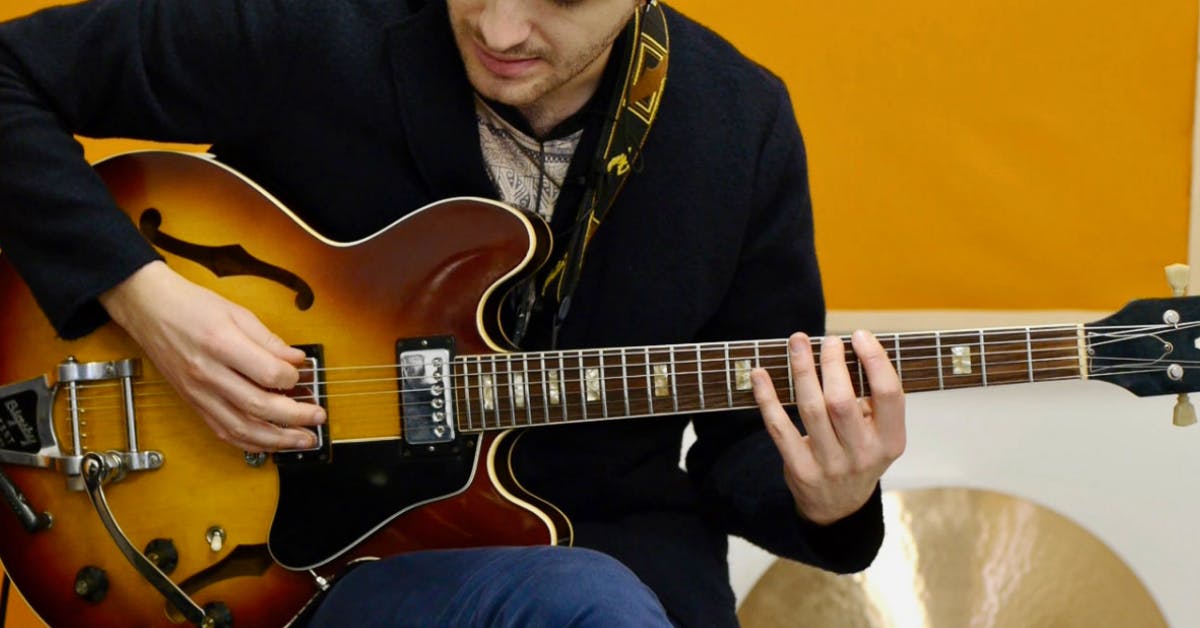
Have you ever heard an amazing blues guitar solo and thought to yourself – how did they come up with that? Now we’re not claiming to know the inner workings of the many incredible guitarists’ minds (although we do know of a few blues musicians who are sharing their secrets), but we are willing to bet that their solo is based on the blues scale.
You might recognise the blues scale from literally millions of famous songs, such as Roadhouse Blues by the Doors or Walk this Way by Aero Smith. And despite being named the blues scale, this scale also features in many other genres such as rock, jazz, pop and more.
In this article we’re going to teach you what the blues guitar scale is, why it’s important and, most importantly, how to play it.

What is the Blues Scale on Guitar?
The blues scale is a 6 note scale that comes from the minor or major pentatonic scale. What makes the blues scale different from a standard 5 note minor pentatonic scale, is the extra note - also known as the ‘blue note’, or the flat 5th in the case of the minor blues scale.
The blue note is what gives the blues scale its distinctive sound, as it doesn’t occur naturally within the scale. Its slight dissonance helps to create a memorable hook for the audience’s ears and makes it perfect for creating killer riffs and solos in almost any genre.
Why Learning the Blues Scale Matters
Any guitarist will tell you not to neglect your scales. They may not seem like the most exciting lesson or technique, but they’re the foundation you need to really get to know your guitar and what it sounds like. Once you’ve mastered this, you’ll be halfway there to writing your own blues guitar riffs and solos and ‘finding your own voice in the blues’.
At MusicGurus we help you get these foundations right. We offer high quality guitar lessons taught by professional musicians featuring HD video and sound, to help you take your skills to the next level.
Browse our lessons from Blues experts Ron Sayer, Marcus Bonfanti or Doug MacLeod to learn more about the blues scale on guitar, blues theory and how to improvise your own songs. We even have a full catalogue of Rockschool Guitar courses so that you can learn to play great tunes featuring the blues scale and improve your skills along the way.
How to Play the Blues Scale
There are two types of blues scales: the minor blues scale and the major blues scale. Both are based on the standard minor and major pentatonic scales.
To play the minor blues scale, you need to add a flat 5th to your standard minor pentatonic scale. To play the major blues scale, you need to add a flat 3rd to the major pentatonic scale. You can do this to any minor or major pentatonic scale once you’ve found the root note (the first note in the scale) but let’s look at some examples.
The Minor Blues Scale
A minor pentatonic scale pattern goes:
1
b3
4
5
b7
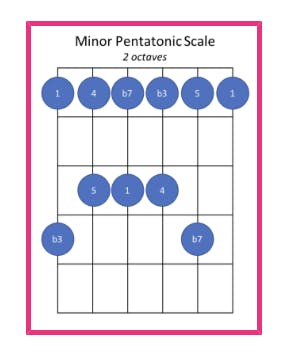
To turn this scale into the blues scale, we need to add the b5 between the 4 and the 5. So, the minor blues scale looks like this:
1
b3
4
b5
5
b7
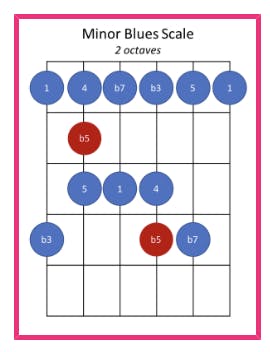
As an example, we can now look at how to turn a standard A minor scale into an A minor blues scale. An A minor scale looks like this:
1 - A
b3 - C
4 - D
5 - E
b7 - G

To turn it into an A minor blues scale, we need to add in the blue note so that it looks like this:
1 - A
b3 - C
4 - D
b5 - Eb
5 - E
b7 - G
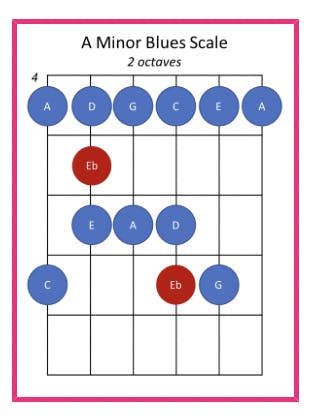
The Major Blues Scale
A standard major pentatonic scale looks like this:
1
2
3
5
6
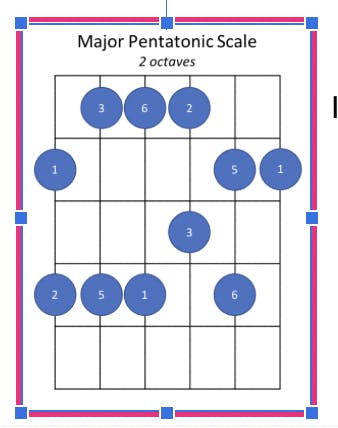
To turn this into a major blues scale, we need to add the b3 in between the 2 and the 3 so that it looks like this:
1
2
b3
3
5
6

Now, let’s look at an example for how to put this into practice. A standard C major pentatonic scale looks like this:
1 - C
2 - D
3 - E
5 - G
6 - A
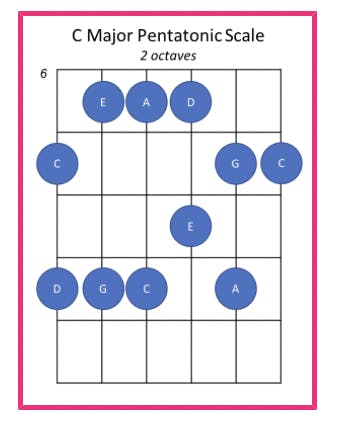
To turn this into a C major blues scale, we need to add the b3 which looks like this:
1 - C
2 - D
b3 - Eb
3 - E
5 - G
6 - A
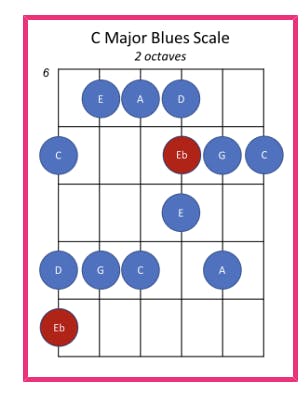
Note that both the C major blues scale and the A minor blues scale have exactly the same notes. It is where we focus the attention of your solos or melodies that dictates the overall tonality. To test this, try playing phrases that start and end on the major root and then phrases that start and end on the minor root and hear the differences for yourself.
Want to learn more about the blues scale? Check out our blues guitar courses and take your skills to the next level today!
Latest posts
See all → Paddy Milner stars in upcoming music documentary ‘The Session Man’
Paddy Milner stars in upcoming music documentary ‘The Session Man’
MusicGurus artist and instructor Paddy Milner features in an upcoming film celebrating the incredible career of session pianist Nicky Hopkins.
 Who Was Nicky Hopkins? The Unsung Hero of Rock and Roll
Who Was Nicky Hopkins? The Unsung Hero of Rock and Roll
Learn about piano player Nicky Hopkins who collaborated with The Beatles, The Who, The Rolling Stones and more on MusicGurus.
 Around The World With Sir Tom Jones
Around The World With Sir Tom Jones
A look back at an incredible tour written by Sir Tom's pianist, and our very own blues piano maestro, Paddy Milner

